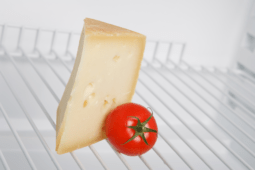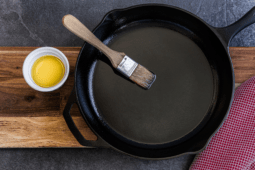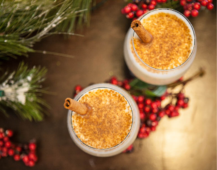Try This: How to Make Your Own Red Wine Vinegar

Right now, you can find more tutorials on how to use vinegar to clean your toilet than you can find to use vinegar with a delicious dinner. This is a travesty for such an amazing and delicious liquid! Unlike most condiments, vinegar is one that you can make yourself and will taste better than anything you can buy in a store. I guarantee it! Here is a simple tutorial on turning leftover wine into homemade vinegar.
Vinegar is a versatile condiment. When reduced it can become a sweet sticky sauce for chicken and pork. It adds a depth of flavor and bite to soups and marinades. Think of wine vinegars like a concentrated version of your favorite vintage. If you recipe calls for wine, sub it with vinegar and see how amazing the flavor can be!
Making your own vinegar is a great way to give some use to wine leftover from your latest dinner party. You will find that any kind of wine, whether cheap or very expensive, will make a vinegar better than anything you buy in a store.
Here's what you'll need:
- 1 bottle of red wine – I used 1.5 L of Cabernet Sauvignon
- 1 Growler or large crock –You want something with a lot of surface area at the top
- 1 piece of cheese cloth or paper towel with a rubber band
- 1 bottle of unpasturized vinegar – I used Braggs apple cider vinegar. It still has the mother starter in it.
- funnel
- measuring cup
Vinegar is made by allowing an active culture, called “the mother,” to feed on the natural alcohol in the wine which, in turn, adds a significant amount of acid to the vinegar. Adding Braggs apple cider vinegar–which has a mother in it already–to your wine shorten the time it takes to make your condiment.
Start by thoroughly cleaning your growler, funnel, measuring cups and other things that may touch your wine. This will help prevent any unwanted bacteria from forming in your vinegar. Once you've done that, fill your growler 2/3 full of wine. For my growler, that was about 4 cups. 
Next, fill the rest of your growler with the apple cider vinegar. About 2 cups for my batch. Be careful to stop filling up your growler before it reaches the neck of the bottle. You want a lot of surface area for the oxygen to penetrate the vinegar and keep the cultures working.
Cover your growler with cheesecloth and secure with a rubber band. This will keep out the fruit flies and other pesky insects from getting into your vinegar (btw – here's a DIY fruit fly trap you can make if you're having issues with those).

Next, grab a sticker label and write what kind of wine you have in the growler and the date you created it. This will help keep you organized when you have 20 bottles of vinegar brewing in your basement.

Once you've labeled your bottle, place your vinegar in a dark place to sit for several months. Mine is sitting in the closet next to my water heater. The ambient heat will actually help the fermenting process. I've found that when I've followed this recipe, the wine will turn into a decent, useable vinegar in about a month. You can let it sit for as long as you like, the longer it sits, the more it intensifies in flavor.
Whenever you have a leftover bottle of red wine, you can add it to your vinegar growler. It will feed the mother and add complexities over time.

Whenever you're ready to use some of your vinegar, pour it through a coffee filter to remove any sediment. I like to bottle my vinegar in leftover liquor bottles with cork stoppers. Just like wine, the cork stopper will allow the vinegar to continue to age and breathe in my pantry.
Go Beyond Wine Vinegar
You can also apply this to any beverage containing alcohol or sugar. Fruit juices, beers, ciders and liquors can be turned into vinegar. Imagine a craft beer malt vinegar or a bourbon vinegar. The possibilities are endless!
I'm still new to vinegar making, I'd love to hear your experiences. Have you made any wild and unique ones?









